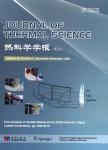Study on Flow Characteristics of a Turbulent Boundary Layer and Vortex Structure of High Pressure Guide Vanes in SCO_2 Turbines
Study on Flow Characteristics of a Turbulent Boundary Layer and Vortex Structure of High Pressure Guide Vanes in SCO_2 Turbines作者机构:R&D Center Xi'an Thermal Power Research Institute Co. Ltd. School of Energy and Power Engineering Xi'an Jiaotong University
出 版 物:《Journal of Thermal Science》 (热科学学报(英文版))
年 卷 期:2019年第28卷第3期
页 面:571-584页
核心收录:
基 金:financially supported by the Postdoctoral Science Foundation of China (Grant No. 2017M613294XB) National Key R&D Program of China (Grant No. 2018YFB1501004) National Natural Science Foundation of China (Grant No. 51406166, 51706181 and 51806172) the Postdoctoral Science Foundation of Shaanxi Province of China (Grant No. 2017BSHQYXMZZ08) Key Programs of China Huaneng Group (Grant No. HNKJ15-H07), R&D Foundation of TPRI (Grant No.ZD-18-TYK13) Young Talent Programs of Chinese Society for Electrical Engineering(Grant No. JLB-2016-70)
主 题:SCO2 turbine vortex structure dimensionless vorticity logarithmic layer viscous sublayer secondary flow
摘 要:In order to further understand the aerothermodynamic performance and flow loss mechanism of SCO_2 turbines, RANS equations and an SST Turbulence Model were chosen for a numerical study on the secondary flow and vortex structure of cascades using the commercial software CFX. The dimensionless vorticity analysis method was used to study the flow characteristics of the logarithmic layer and viscous sublayer in high pressure guide vane cascades. The new vortex structure and formation mechanism of the vortices were given and analyzed. Simulation results indicated that during the motion of the boundary layer in the cascades, the logarithmic layer and viscous sublayer obtain the different rotational direction vorticity, respectively. The endwall logarithmic layer and pressure side leg of the horseshoe votex gradually develop into the passage vortex, with the endwall viscous sublayer gradually developing into the corner viscous sublayer vortex II and the endwall viscous sublayer vortex I. The endwall viscous sublayer that rolled by the passage vortex is encountered with the upstream-side and radial boundary layer of the vane at the suction separation line, forming the suction separation line vortex beside the passage vortex. A pair of radial transition vortices are formed between the wake and the main stream.



